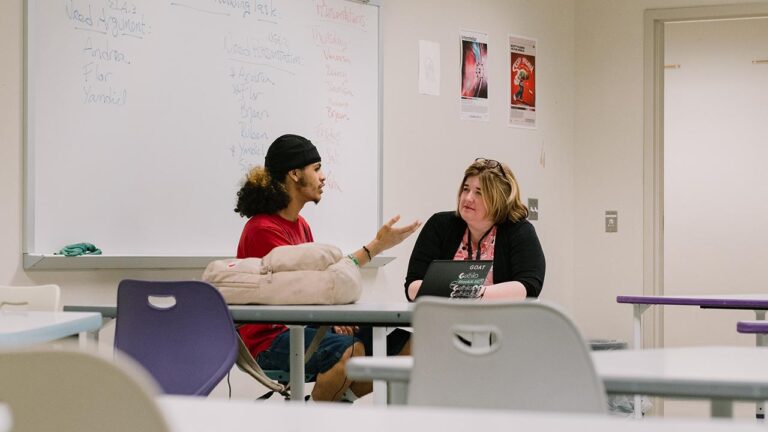Public school teachers play a crucial role in shaping the future of the United States, yet their profession often faces intense scrutiny and evolving challenges. A recent report by the Pew Research Center sheds light on key facts about these educators, offering an in-depth look at who they are, their working conditions, and the demographic shifts influencing classrooms nationwide. This article delves into the latest data, providing readers with a clear and comprehensive overview of the state of public school teaching in America today.
Public School Teachers in the U.S Demographics and Diversity Trends
Public school educators in the United States have experienced gradual shifts in demographic makeup over recent years, revealing important trends in age, ethnicity, and gender. While women continue to dominate the profession, comprising approximately 76% of the teaching workforce, the average teacher age is steadily rising, with more educators aged 45 and older now in classrooms than in previous decades. This aging trend raises concerns about potential shortages and the need for attracting younger talent into the profession.
Ethnic diversity among public school teachers shows promising, yet uneven growth. Hispanic and Black teachers have increased their representation but still lag behind the broader student population demographics. Notably, Asian educators form one of the fastest growing minority groups within schools. Key points include:
- White teachers remain the majority at roughly 79%
- Hispanic teachers have grown to approximately 9%
- Black teachers represent about 7%, showing incremental increases
| Demographic Group | Percentage of Teachers | Change Since 2010 |
|---|---|---|
| White | 79% | -3% |
| Hispanic | 9% | +2% |
| Black | 7% | +1% |
| Asian | 3% | +1% |
| Other | 2% | +0.5% |
Workload and Compensation Challenges Facing Educators
Public school teachers in the United States often face a demanding workload that extends beyond classroom instruction. Many educators report spending significant hours on lesson planning, grading, and extracurricular activities, which contribute to job stress and burnout. This heavy workload is exacerbated by increasing class sizes and administrative responsibilities, leaving teachers with limited time for professional development or personal rest.
Compensation remains a critical concern:
- Many teachers earn salaries below the national median income for other professions requiring similar education levels.
- Salary stagnation has led to challenges in teacher retention and recruitment, especially in high-need areas.
- Additional out-of-pocket spending on classroom supplies places further financial strain on educators.
| Factor | Impact on Educators |
|---|---|
| Average Weekly Hours | 50+ hours |
| Median Salary (2019) | $61,730 |
| Percentage Spending Own Money on Supplies | >90% |
Impact of Teacher Experience and Qualifications on Student Outcomes
Numerous studies confirm that teacher experience and qualifications significantly influence student success. Veteran educators tend to foster higher academic achievement and better classroom management, translating into improved student engagement and test scores. Additionally, teachers holding advanced degrees or specialized certifications often bring enhanced pedagogical skills and subject-matter expertise, contributing to more effective instruction. Schools with a high proportion of experienced and well-qualified teachers consistently report stronger student performance, especially in core subjects like math and reading.
- Experienced Teachers: More adept at adapting lessons to diverse learning needs.
- Certified Teachers: Show a positive correlation with standardized test outcomes.
- Advanced Degrees: Often linked to increased use of innovative teaching strategies.
| Teacher Profile | Average Student Test Scores | Classroom Engagement Level |
|---|---|---|
| 0-3 Years Experience | 65% | Moderate |
| 5+ Years Experience | 78% | High |
| Advanced Degree Holders | 82% | Very High |
Policy Recommendations to Support and Retain Public School Teachers
To address ongoing challenges faced by public school teachers, experts emphasize the necessity of enhancing compensation packages and benefits to better reflect the demands and responsibilities of the profession. Competitive salaries combined with comprehensive healthcare, robust retirement plans, and opportunities for professional development can help attract new talent and increase retention rates. Additionally, creating supportive work environments that foster collaboration, reduce administrative burdens, and provide access to mental health resources is critical for sustaining teacher morale and effectiveness.
- Increase base pay and offer performance bonuses
- Expand access to training and career advancement
- Implement mentorship programs for early-career teachers
- Reduce class sizes to improve teaching conditions
- Enhance job security and tenure protections
| Policy Area | Recommended Action | Impact |
|---|---|---|
| Compensation | Raise salaries by 10-15% | Boost recruitment and reduce turnover |
| Support Services | Provide counseling and wellness programs | Improve teacher well-being and job satisfaction |
| Professional Development | Fund ongoing skill-building workshops | Enhance teaching quality and retention |
In Conclusion
In sum, public school teachers in the U.S. play a crucial role in shaping the nation’s future, facing unique challenges and opportunities as highlighted by the latest Pew Research Center findings. Understanding these key facts provides valuable context for ongoing discussions about education policy, workforce dynamics, and the support needed to empower educators nationwide. As the landscape of public education continues to evolve, monitoring these trends remains essential for informed decision-making and ensuring quality education for all students.




